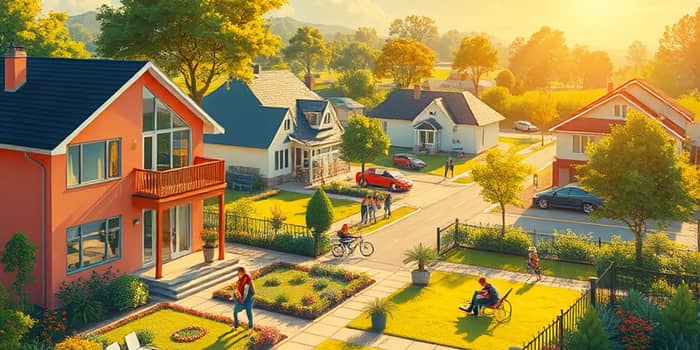
In the wake of the global pandemic, the way we live and work has undergone a profound transformation. As the traditional office dissolves into memory, millions of professionals have embraced the freedom of remote work. This shift has thrown open new doors in residential real estate, changing buyer priorities, migration patterns, and developer strategies. By understanding these trends and seizing emerging opportunities, homeowners, investors, and communities can thrive in this exciting new era.
What began as a necessary response to health concerns has become a long-term reality. Today, the demand for dedicated home office spaces and comfortable living environments is at an all-time high. From bustling suburbs to tranquil rural towns, remote workers are redefining what makes a home desirable, offering a fresh perspective on design, location, and lifestyle.
Remote work has sparked a departure from cramped city apartments toward homes that support both productivity and well-being. Families and individuals now prioritize space, serenity, and amenities that foster creativity and focus. This change has led to a renaissance in suburban and exurban areas, where larger plots, scenic surroundings, and community connections offer an inviting alternative to urban living.
Investors and developers are responding with innovative projects that blend residential comfort with professional functionality. From co-living communities with integrated work hubs to single-family neighborhoods with high-speed internet infrastructure, the housing market is evolving at breakneck pace. These developments cater to a new class of buyers who value flexible living solutions over traditional city amenities.
Detailed surveys reveal that 32% of remote workers have redefined their real estate needs. The most sought-after features include:
Moreover, 31.7% of remote professionals have invested substantially in home modifications, carving out niches for productivity. This trend is more than a passing phase: remote work has cemented a permanent shift in housing demand, reshaping how people view the concept of home.
The freedom to work from anywhere has unleashed a wave of relocations. In 2024 alone, 21% of remote workers moved, with half choosing suburban regions. Motivations ranged from cost of living and proximity to family to better weather and improved work-life balance. This migration has driven property values upward in once-overlooked areas, creating fertile ground for new developments.
Meanwhile, urban cores have experienced a recalibration in demand. While luxury city apartments continue to sell, the strongest price growth is unfolding in smaller metros and rural towns. As remote professionals seek community-oriented environments, local economies benefit from increased spending, new businesses, and revitalized downtowns of smaller cities.
Developers are seizing the moment by crafting mixed-use communities that integrate living, working, and leisure. Projects often feature shared coworking lounges, outdoor gathering spots, and wellness amenities such as gyms and meditation areas. The goal is to deliver environments where residents never feel the need to commute elsewhere for work or recreation.
Investors are particularly attentive to suburbs primed for growth, where underutilized land can be transformed into thriving walkable neighborhoods. Co-working operators are also expanding partnerships with residential developers to embed flexible workspaces within apartment complexes, appealing to both renters and owners.
Beyond real estate transactions, the remote work revolution carries significant societal implications. Employees gain more autonomy over their schedules, reducing stress and enhancing mental health. Communities welcome new residents who contribute to local economies and cultural vibrancy.
Looking ahead, experts anticipate that “work from anywhere” will simply become “work.” Companies resistant to flexible models risk losing top talent to more adaptive competitors. The digital nomad trend and the pursuit of balanced lifestyles are set to endure, ensuring that residential real estate remains at the forefront of economic and social change.
Whether you are a prospective buyer, a savvy investor, or a community planner, the key takeaway is clear: the integration of work and living spaces is not a fad. It is a transformative force creating more connected, flexible, and fulfilling environments. By embracing these shifts and investing in forward-thinking solutions, stakeholders can shape vibrant, resilient communities that stand the test of time.
References













